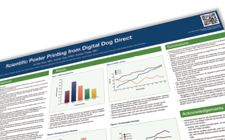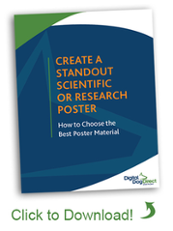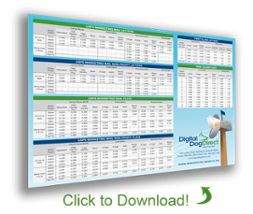 A well-designed scientific or research poster is the difference between your hard work and hours of research getting noticed (and understood!) and an overlooked poster board. So, good design is critical in clearly communicating your data.
A well-designed scientific or research poster is the difference between your hard work and hours of research getting noticed (and understood!) and an overlooked poster board. So, good design is critical in clearly communicating your data.
These three key elements will guide you in creating a successful scientific poster design.
1. Orderly Layout and Sequence
The amount of information in a research poster can be hard enough to absorb on its own, let alone in a large crowd surrounded by people and other research posters. The more orderly your layout, the more digestible your information will be. Using columns to align your text, white space to let your information breathe, and legible fonts are important aspects.
To keep things tidy:
- Know your type. Sans serif fonts are better for the bulk of your text, while serif tends to be better for adding contrast, such as in headers.
- The title should be set in a large font size — at least 72 points and larger if possible.
- Ensure that your content is organized. Does it flow in a readable way?
- Pay attention to spacing. Use only one space between sentences (Really! No double spaces after periods anymore!) and set your leading (line height) so that the text does not look too crowded.
2. Effective Visual Elements
Visual elements are the fastest way to convey your findings. Did you know that visuals are processed 60,000 times faster in the brain than text? Your charts, graphs, and photos or illustrations can be powerful tools for catching the audience’s attention but also effectively communicating and supplementing your data. That said, don’t forget to keep it simple — less is more!
A few reminders:
- Choose the most powerful visuals that will support your findings.
- Don’t use web images; their low resolution will produce grainy or pixelated images in print.
- Don’t overlook the importance of color choice. Make sure that your poster is a cohesive piece by following a color scheme. (Grab a graphic designer for their help or opinion!)
- Label your visuals with clear and concise phrases.
3. Include the Right Information
This may sound like a no-brainer but obvious information is often overlooked. Here is a checklist of your must haves:
- A compelling introduction
- Funding acknowledgements
- Your contact information
- Clearly cited references in standard citation format
- Legends, figures, axes labels, etc.
Other Important Reminders
- Be sure to find out the poster size your conference allows. Then find a printer that can handle your poster size.
- Choose the best material to print your poster on. For a guide to choosing the right material for you, download our white paper, Create a Standout Scientific or Research Poster: How to Choose the Best Poster Material.
Need a printing quote for your next poster? Contact us today!
Sources
Purrington, C.B. Designing conference posters. Retrieved October 15, 2014, from http://colinpurrington.com/tips/academic/posterdesign.
Graves, LiLynn. Scientific poster design. Retrieved October 15, 2014 from http://hsp.berkeley.edu/sites/default/files/ScientificPosters.pdf.




Comments